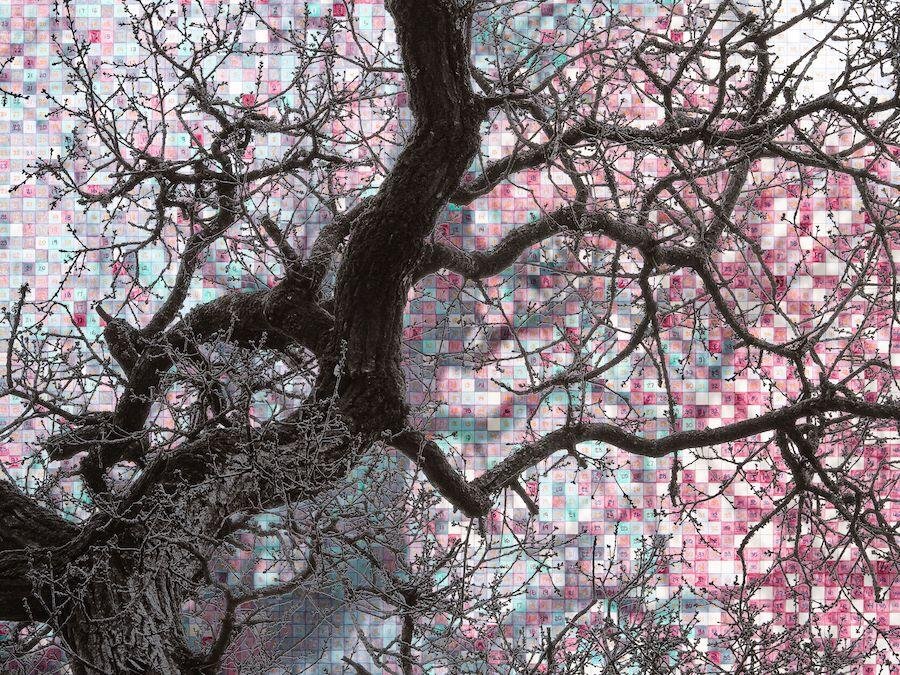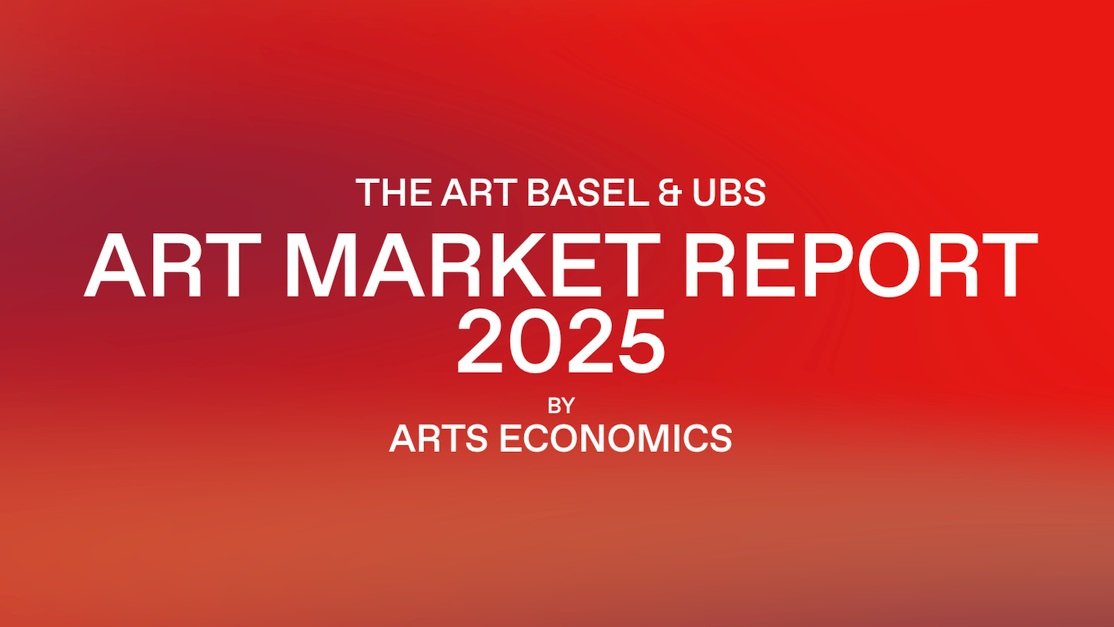APAA + Frieze NY: Top Picks Over $50,000
APAA members Victoria Burns, Astrid Oviedo Clark, Wendy Cromwell, Darling Green, Cardiff Loy, Lisa Marie Marks, Liz Parks, Irene Papanestor, Michele Quinn and Pilar Vahey have noted their top picks over $50,000 at Frieze NY.
ALEX DA CORTE (Sadie Coles HQ)
A Modern Love, 2022
neon, vinyl siding, laminate, plywood, house paint, velvet, hardware
72.01" x 72.01" x 5.98" (182.9 cm x 182.9 cm x 15.2 cm)
$150,000
Alex Da Corte has been on my radar ever since I saw his brilliant video installation at the Carnegie International in 2019. His presentation at the current Whitney Biennial is one of the exhibition's highlights. Da Corte's world is wide-eyed, color-blocked, and Pop art inflected. His concise animations and sculptural installations make no distinction between Modern art and children's television. Da Corte's sculptures function as Minimalist boxes that glow like tv sets, beckoning the viewer to ditch their homework and come play.
— Wendy Cromwell.
Homa Delvaray (Dastan Gallery)
“The Garden of Desolation” series, 2022
The ancient Persian garden was a prototype for the modern exhibition, and fittingly, Homa Delvaray’s The Garden of Desolation series brings that seminal form into dialogue with inventive methods of display. Her humbly welded utility shelf-like constructions are overlaid with Persian poetry and patterns reminiscent of landscape plans, which, printed onto translucent surfaces, brilliantly catch light—the element of utmost importance to the garden pavilion architects of old. For the past decade, Delvaray has been known as one of the foremost graphic designers of the florescent Iranian scene, becoming an internationally sought collaborator as well as an influential theoretical voice as former editor of multiple Persian-language design journals. Her move into sculptural objects, presaged by her intricate artist books and textiles, maintains a similar labyrinthic complexity to her poster works, but also assert themselves in three dimensional space, a bold statement against her marginalization as an Iranian woman. — Darling Green
TRACEY EMIN (White Cube)
You Never Should have Loved Me The way you did" (2014)
Neon
£ 80,000
Tracey Emin first began working with neon gas light as a medium in the early Nineties, and this sculpture - articulated using her own scribbly handwriting as its font - embodies the essence of the artist's diaristic and emotionally charged practice. Emin's language can alternate between vague and explicit, flirtatious and reproachful, declarative and questioning. There's a heightened intimacy to "You Never Should have Loved Me The way you did" as Emin issues an aggrieved admonishment (or a sorrowful realization?) to someone directly addressed as "You." And, in a power move, Emin reclaims the color yellow and flips all of its associations with sunny positivity upside down. The sculpture is Emin's own bold voice writ large, delivered with the intensity of a yellow-jacket's sting.
— Irene Papanestor
Charles Gaines (Hauser & Wirth)
Numbers and Trees: London Series 2, Tree #1, Blomfield Street, 2022
Acrylic sheet, acrylic paint, lacquer, wood
$500k-1m
Charles Gaines continues to explore rules-based formulas and how these arrangements create meaning in our world in his latest series: Numbers and Trees, 2022. In the new works for Frieze New York, Gaines has reversed his signature process of layering for the first time since he began the Plexiglas series in 1986 – printing enlarged photographic details of a tree on top of the Plexiglas instead of on the work’s back panel. This new approach brings the tree’s shadowy branches to the foreground and obscures the beautiful and brightly colored, numbered grid painted beneath it. The image of the tree has been central to the artist’s work since the mid-1970s and his methodical examination of their form continues in these most recent works which were inspired by the immense trees he encountered during a trip to Dorset, England in early 2020.
— Cardiff Loy
MONA HATOUM (White Cube)
Triangulation, 2022
Glass beads, wire and leather
4.33" x 22.44" x 23.62" (11 cm x 57 cm x 60 cm)
£ 120,000
Mona Hatoum is one of the most influential artists of our time, with a practice that spans performance, sculpture and installation. Born in 1952 to a Palestinian family in Beirut, Hatoum’s family often felt like outsiders. In 1975, she was visiting London when the Lebanese civil war broke out - preventing her from returning home. Hatoum harnesses personal experiences of dislocation and transmutes them into art that speaks to our collective world traumas. She addresses themes of family and displacement, drawing attention to the growing unease of a world fractured by war and exile. Transmutation speaks to a familial web, but also pulls in a darkness with the title. In psychology, triangulation is a form of manipulation or exclusion used to increase other’s feelings of supremacy. While the web brings the family of shoes together, the title suggests an outside force threatening to pull them apart. — Victoria Burns
DORON LANGBERG (Victoria Miro)
Oren and Bennett, 2022
Oil on linen
203.2 x 243.8 cm
80 x 96 in
Israeli born, New York based artist Doron Langberg is known for his large-scale portraits of friends and family painted in loose vivid brush strokes often on a large scale. Direct in their intimacy and conveying the love and trust between subject and artist, Doron frequently paints the male nude exploring queer sexuality. The quiet bedroom bliss of Oren and Bennett with their dog playfully watching is a dynamic portrait that is beautiful with its lush jewel tones and gestural mark making. The viewer feels that they too know Oren and Bennett.
— Lisa Marie Marks
SAM MOYER (Sean Kelly)
Ester, 2021
marble, acrylic on plaster-coated canvas mounted to MDF
97.01" x 132.24" x 0.98" (246.4 cm x 335.9 cm x 2.5 cm)
$ 125,000
I am looking forward to seeing in person this absolutely colossal work from Brooklyn-based artist Sam Moyer. Moyer’s work explores the tension created when the lightweight, artist-manipulated materials closely associated with painting are paired with and juxtaposed against the heavy, raw materials typically used in sculpture. Her work presents a paradox: can these seemingly opposing forces coexist? The stone Moyer uses lands in her studio “as is,” and Moyer views these discarded behemoths not as cast-offs but as opportunities: their limitations provide her with parameters by which she paints and shapes her canvas around them. The repurposing of the old with the new, of finding freedom within constraint, of the (al)ready-made with the woman-made, furthers the push-pull inherent in the work, creating a new hybrid reality. The works in Moyer’s last show at Sean Kelly were smaller representations of this amalgam; their more human-scale size due to limitations imposed on her studio practice by the pandemic. I see this monumental work as a declarative statement that the covid shackles have come off. — Liz Parks
ISAMU NOGUCHI (White Cube)
Chinese Sleeve #2, 1987 (cast 2021)
Bronze plate
63.86" x 31.73" x 31.5" (162.2 cm x 80.6 cm x 80 cm)
Edition of 6 with 2 APs
$ 375,000
American artist Isamu Noguchi was a master of experimentation in materials and forms throughout his long career. With the piece Chinese Sleeve #2 he referenced his work as a set designer and collaborator with the modern dance choreographer Martha Graham. Using the materials of steel and bronze in folded metal, Noguchi reacted to the New York City environment creating this piece that has the delicacy of origami and the graceful lines of a dancer. At this price point, collectors should be looking for pieces that resonate with them deeply and have a timeless longevity to the materials and forms, so I cannot think of a better artist. Noguchi also planned for these later editioned works in metal to be produced after his death, so this piece was cast posthumously. It was the artist's intention to do so to fund the incredible Noguchi Museum in Long Island City. — Pilar Vahey
KATHLEEN RYAN (Karma)
Bad Orange (Wedge), 2022
Magnesite, labradorite, prehnite, citrine, amazonite, aventurine, turquoise, sesame jasper, moss agate, aquamarine, chalcedony, quartz, serpentine, bone, shell, coral, glass, acrylic, steel pins on coated polystyrene, VW Beetle trunk
25.98" x 30.98" x 24.02" (66 cm x 78.7 cm x 61 cm)
$100-250k
With Bad Orange (Wedge), Kathleen Ryan brings together contrasting materials (a discarded section of a VW Beetle trunk and semi-precious gemstones) and creates a contemporary take on the still life and, in particular, the vanitas by 17th c. Dutch Masters. Then, patrons showcased their wealth and worldliness through the presentation of precious objects like china, and precious metals, as well as delicacies that only the elite class could afford. Citrus fruit was one favored delicacy to show off at special gatherings. The vanitas was a particularly symbolic still life in which the patron could also display some humility, as it was meant to act as a reminder of the ephemeral nature of life and of death. Here Ryan presents us with her vanitas presentation of an oversized rotting wedge of orange. The work also brings to mind the omnipresent citrus trees of Ryan’s own natal home, Los Angeles, where they hover indiscriminately over sidewalks everywhere, available to all. Mundane and precious, grotesque and attractive, Bad Orange (Wedge) succeeds in its mission. — Astrid Oviedo Clark
SARAH SZE (Victoria Miro)
Air from Air (Fallen Sky Series), 2021
Stainless Steel
7.52" x 72.01" x 72.01" (19.1 cm x 182.9 cm x 182.9 cm)
$250,000-$500,000
Air from Air (Fallen Sky Series), 2021, by Sarah Sze relates to the artist’s landmark installation Fallen Sky, a permanent, site-specific work nestled into a hillside at Storm King Art Center in upstate New York. Like Fallen Sky, which was created partly through a process of erosion, the sculpture is inspired by ancient architecture and the language of ruins. The completed work in stainless steel with reflective mirror- polished surfaces catches an ever-changing stream of passing light and shadow across its multiple individual elements. In 2023, work by the artist will be featured in a solo exhibition at the Solomon R. Guggenheim Museum in New York. Having worked in the public/outdoor space for many clients and projects, Sarah’s use of material, and the way this work dissipates into the “landscape” makes this work very intriguing. It is difficult to find sculptural works that complement the environment and do not feel like they are out of context with the space. It seems as if this work could be placed almost anywhere and feel naturally interspersed by the way the material is broken up, and allows its surroundings to become part of the work. — Michele Quinn






